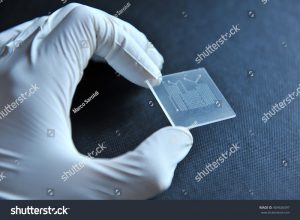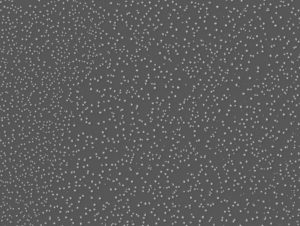Group name: Electronic and structural correlations in functional nano-materials and devices
Short name: Functional nano-materials/devices
Research area: Condensed matter physics
Group leader: Ante Bilušić
Theme #1: Thermoelectricity in [correlated materials] / [anatase]
Thermoelectric energy conversion relies on conversion of temperature gradient to electricity (and vice versa). Devices based on thermoelectric effect, if efficient thermoelectric material would be existing, would serve as an important contributor to sustainable and environmental-friendly energy supply. Thermoelectric figure of merit, a multiple of the electric conductivity, the square of the thermoelectric power divided by the thermal conductivity, determines thermoelectric material’s efficiency.
We study electrical resistivity and the thermoelectric power in wide temperature (2 K – 800 K) and magnetic field ranges (<12.5 T) of pure and doped anatase that, due to its high thermoelectric power, is a potentially efficient thermoelectric material.
Theme #2: Heat conduction of fuel cell membranes
 Nafion membrane, with incorporated platinum nanoparticles that serve as hydrogen redox centers, is core of proton-exchange hydrogen fuel cells. Membrane overheating leads to fading of platinum-nanoparticles redox ability, eventually resulting in shortening of fuel-cell lifespan.
Nafion membrane, with incorporated platinum nanoparticles that serve as hydrogen redox centers, is core of proton-exchange hydrogen fuel cells. Membrane overheating leads to fading of platinum-nanoparticles redox ability, eventually resulting in shortening of fuel-cell lifespan.
Our aim is to establish 3-omega method for experimental determination of high-temperature thermal conductivity, that will enable us to study how thermal conductivity of nafion membranes is related to concentration of platinum nanoparticles.
Theme #3: Silver nanoparticles for bioimaging
 Our goal is to define and optimize ways and parameters for large-area uniform coverage of different substrates by silver nanoparticles. The following is application of bioactive protein-layer to silver nanoparticles, and to examine which kind of layer can serve as potential sensors of certain biomolecules.
Our goal is to define and optimize ways and parameters for large-area uniform coverage of different substrates by silver nanoparticles. The following is application of bioactive protein-layer to silver nanoparticles, and to examine which kind of layer can serve as potential sensors of certain biomolecules.
Theme #4: Engineering reservoirs and optimizing response function measurements in quantum simulators and computers
The research theme deals with quantum computers and theory of “measurement”. The quantum computers are able to process much larger data sets than classic computers, due to the fact that they use quantum states (qbits) which satisfy the superposition principle. The amount of data stored with qbits is exponentially larger than the one stored with the classical bits. Quantum computers have the potential for solving the problems in cryptography, numerical modeling, artificial intelligence, etc. Quantum simulation algorithms have been known for years and in some cases their efficiency is very high. But in other cases, such as the simulation of fermions, the efficiency of quantum algorithms is poor and it is not even clear by which strategy it could be improved. The proposed research will explore the possibility of converting fermion degrees of freedom into spin degrees of freedom using the Jordan-Wigner transformation and compare the results with what one finds by the the Bravyi-Kitaev method. Furthermore, we will work on the development of a quantum simulation protocol for fermion systems out of thermodynamic equilibrium. In particular, we are interested in a protocol for “”measuring”” the quantum many-body system, because it is not yet clear how to “”measure”” the fermion correlation functions, such as Green’s and response functions. The theory of “”measurement”” has been developed for one or two particles but the generalization to many-body systems has yet to be developed.
Project: Engineering reservoirs and optimizing response function measurements in quantum simulators and computers, MZO-NSF project No: 2/2019 (2020-23)
-
Ante Bilušić Redoviti profesor u trajnom zvanju
- tel: +38521619295
- kabinet B3-25
- ante.bilusic@pmfst.hr
-
-
- Anton Kabaši
- Laszlo Forro
- Petar Popčević
- Vlasta Bonačić Koutecky
- Veljko Zlatić
Publications
- Bunčić, A. Kabaši, T. Čakarić, A. Bilušić, Prototyping of a High Frequency Phased Array Ultrasound Transducer on a Piezoelectric Thick Film, https://doi.org/10.33180/InfMIDEM2019.101
- Popcević, D. Stanić, Ž. Bihar, A. Bilušić, A. Smontara, Heat Transport in Aluminum-Based Quasicrystals i-AlPdMn, i-AlCuFe, and d-AlCoNi, https://doi.org/10.1002/ijch.201100150
- Bilušić, A. Smontara, J. Dolinšek, P. McGuiness, H. R. Ott, Phonon scattering in quasicrystalline i-Al72Pd19.5Mn8.5: A study of the low-temperature thermal conductivity, https://doi.org/10.1016/j.jallcom.2006.05.097
- Zlatić, U. Stockert, Temperature and doping dependence of the thermoelectric power of Yb(Rh1−xCox)2Si2 Intermetallic compounds arXiv:1911.04396 (2019), https://arxiv.org/abs/1911.04396
- Očko, K. Zadro, Đ. Drobac, I. Aviani, K. Salamon, D. Mixson, E.D. Bauer, J.L. Sarrao, J. Magn. Magn. Mater. 451, 727-733 (2018). https://doi.org/10.1016/j.jmmm.2017.12.014
- Očko, K. Zadro, Đ. Drobac, I. Aviani, K. Salamon, E.D. Bauer, J.L. Sarrao, J. Magn. Magn. Mater. 426, 40-45 (2017). https://doi.org/10.1016/j.jmmm.2016.11.051
- Očko, K. Zadro, Đ. Drobac, I. Aviani, K. Salamon, D. Mixson, E.D. Bauer, J.L. Sarrao, J. Magn. Magn. Mater. 417, 359 (2016). https://doi.org/10.1016/j.jmmm.2016.05.100
Center of excellence for science and technology, STIM
Sulfosalts: a New Generation of Complex Functional Materials, Croatian Science Foundation, principal investigator: Prof Denis K. Sunko, University of Zagreb, Faculty of Science, (2018-22)
Research of materials with strong electronic correlations, MZO-NSF project No: 1/2016 (2016-20)
Engineering reservoirs and optimizing response function measurements in quantum simulators and computers, MZO-NSF project No: 2/2019 (2020-23)
V. Zlatić and U. Stockert, Dependence of transport coefficients of Yb(Rh1−xCox)2Si2 intermetallics on temperature and cobalt concentration Phys. Rev. B 101, 155146 (2020) https://doi.org/10.1103/PhysRevB.101.155146
Contact information
Ante Bilušić, group leader
bilusic@pmfst.hr
University of Split, Faculty of Science, Ruđera Boškovića 33, HR-21000 Split, Croatia
phone: +385 21 619 295
fax: +385 21 619 227




